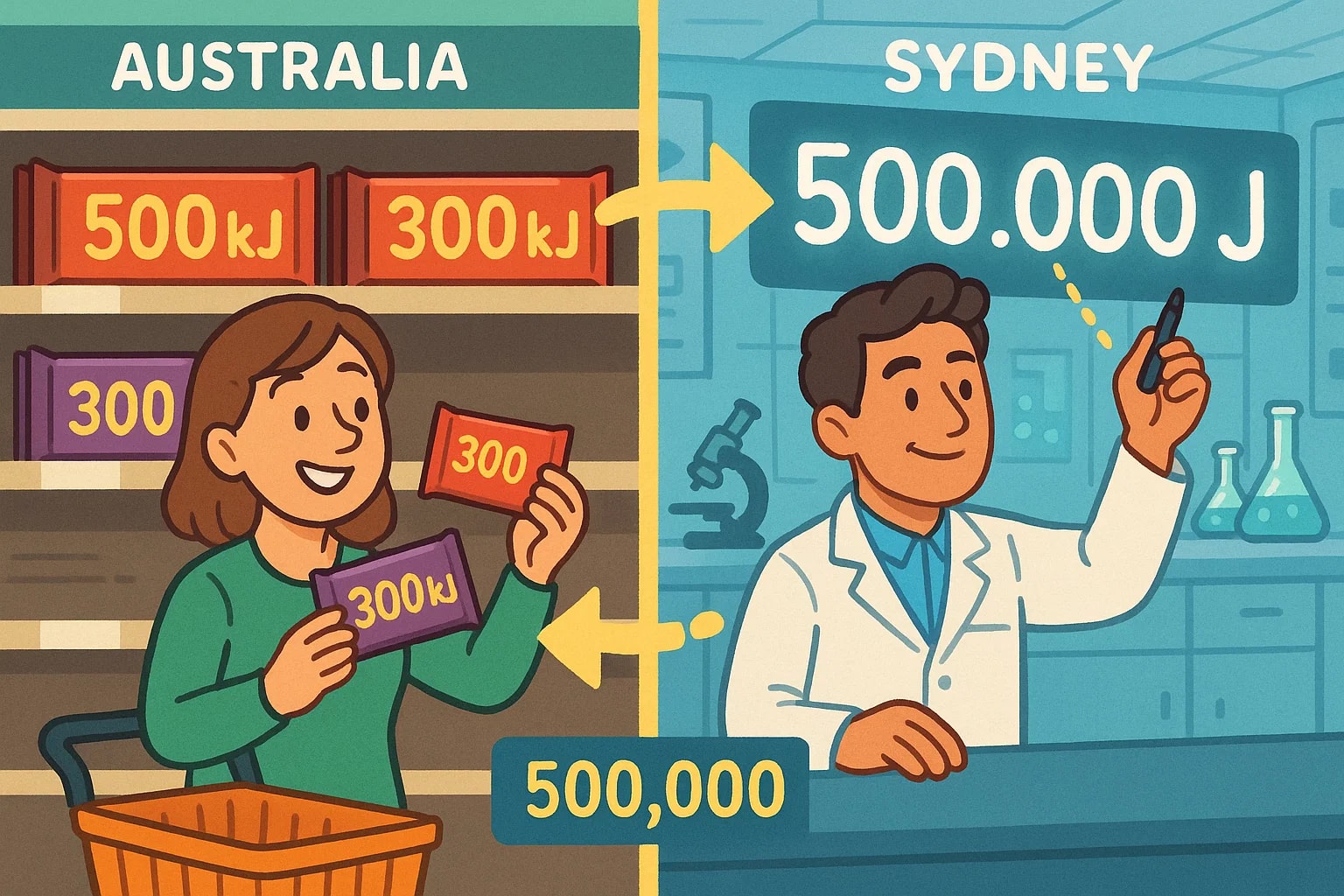kilojoule to joule – How to convert kJ to J
The conversion from kilojoule to joule is a basic step in the SI system — one kilojoule equals exactly 1,000 joules. This shift is important in science, engineering, and nutrition, where scaling down makes data more precise.
What is a kilojoule?
A kilojoule (kJ) equals 1 000 joules. It’s widely used for expressing moderate amounts of energy, such as food energy values, appliance ratings, or small industrial measurements.
Formula:1 kJ = 1 000 J
In many countries, nutrition labels display energy content in kilojoules rather than calories, making them a familiar unit in daily life.
What is a joule?
A joule (J) is the SI unit of energy, defined as the work done when a force of one newton moves an object one meter.
Formula:1 J = 1 N × 1 m or E = ½mv²
Joules are used for detailed scientific calculations, especially when precise energy measurements are needed.
How to convert kilojoule to joule
The conversion is straightforward:Energy (J) = Energy (kJ) × 1 000
Example: If you have 8.5 kJ, thenEnergy = 8.5 × 1 000 = 8 500 J
For the reverse conversion:Energy (kJ) = Energy (J) ÷ 1 000
You can work it out in seconds with our Energy Converter, and for more unit conversions, check the full Conversion Tools collection.
Do you know?
-
Kilojoule fact: In Australia and New Zealand, food packaging is legally required to display energy in kilojoules, often alongside calories.
-
Joule fact: One joule equals the energy needed to lift a small apple one meter against gravity.
-
Kilojoule fact: A slice of wholegrain bread contains about 250 kJ — that’s 250 000 J of chemical energy.
-
Joule fact: The energy of a mosquito in flight is around a few microjoules — millions of times smaller than a single kilojoule.
From Grocery Shelf to Science Lab: The Food Energy Story
A nutrition researcher in Sydney examines how people read food labels. In Australia, energy values are displayed in kilojoules, but her lab work requires measurements in joules.
Take a chocolate bar labeled at 500 kJ. In the lab’s metabolic tests, this becomes 500,000 J. The joule figure is essential for calculating detailed energy transformations in the body, like how much is used for heat production versus stored as fat.

On the grocery shelf, kilojoules keep the numbers easy to read and compare. For instance, a shopper deciding between two snacks can quickly see that one has 300 kJ and the other has 450 kJ — a meaningful difference without having to process large six-digit numbers.
Back in the lab, joules give researchers the granularity they need for precise calculations. In one experiment, they tracked how much energy athletes expended during high-intensity training, measuring output in joules to the last decimal. The results helped fine-tune dietary recommendations, which were then expressed back in kilojoules for public use.
This constant switching between kJ and J highlights the value of scaling. The numbers change, but the energy remains the same — only the perspective shifts to fit the audience.
Energy Units That Fit Every Context
The kilojoule to joule conversion is simple, but it bridges two ways of communicating the same physical quantity. Kilojoules make everyday information easy to grasp, while joules give scientists and engineers the precision they need.
From a nutrition label to a physics experiment, choosing the right scale makes energy data both accessible and accurate. Being fluent in both units means you can move confidently between public communication and technical analysis without losing clarity.

